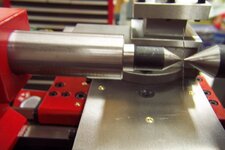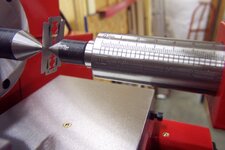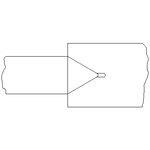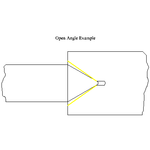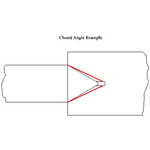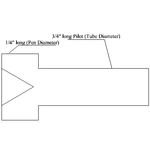underdog
Member
In an effort to get pen bodies perfectly matched up to the hardware kits, I've tried several things, with varying results.
I've always used a set of calipers to determine the blank finished diameter and the hardware diameter (nib, cap and center band). So I don't have a problem with that..
But seems like getting that blank/tube completely centered on the axis is always a hit and miss proposition. No matter what I have done, I have still been able to feel high/low spots between the nib and body.
I've tried the following:
1) using an adjustable mandrel with only enough tailstock pressure to keep it captured.
2) turning the nib end at the headstock to minimize any runout.
3) turning one body at a time to minimize runout.
4) using a better pen mill that didn't leave a burr (arizona silhouette) on the tube due to clearance between the shaft and cutter head.
5) using a machinist's dead center and 60 live center, along with Johnny CNCs bushings.
I think that's about it.
I did some measuring last night... here are some things I learned.
1) clearance between the mandrel (OD - .244") and the brass tube (ID - .248") is about .004". Plenty of slop to induce anywhere from 0-.004" runout... (I suppose that'd be .008" if actually measuring runout, eh?)
2) Although I didn't measure any runout on the precision 60° centers (from Johnny), one of my Johnny CNC's bushings still has about .002" runout, and the other is about .001". When using this setup, I still got some pretty large felt non-concentricity on my pens. I haven't tried this method with the good pen mill, though, so the jury is still out. If I can get better results I'll let you know.
I've always used a set of calipers to determine the blank finished diameter and the hardware diameter (nib, cap and center band). So I don't have a problem with that..
But seems like getting that blank/tube completely centered on the axis is always a hit and miss proposition. No matter what I have done, I have still been able to feel high/low spots between the nib and body.
I've tried the following:
1) using an adjustable mandrel with only enough tailstock pressure to keep it captured.
2) turning the nib end at the headstock to minimize any runout.
3) turning one body at a time to minimize runout.
4) using a better pen mill that didn't leave a burr (arizona silhouette) on the tube due to clearance between the shaft and cutter head.
5) using a machinist's dead center and 60 live center, along with Johnny CNCs bushings.
I think that's about it.
I did some measuring last night... here are some things I learned.
1) clearance between the mandrel (OD - .244") and the brass tube (ID - .248") is about .004". Plenty of slop to induce anywhere from 0-.004" runout... (I suppose that'd be .008" if actually measuring runout, eh?)
2) Although I didn't measure any runout on the precision 60° centers (from Johnny), one of my Johnny CNC's bushings still has about .002" runout, and the other is about .001". When using this setup, I still got some pretty large felt non-concentricity on my pens. I haven't tried this method with the good pen mill, though, so the jury is still out. If I can get better results I'll let you know.
Last edited:

